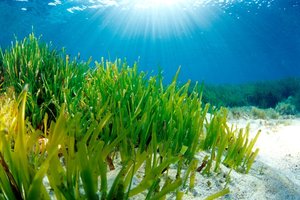Coral bleaching is the loss of zooxanthellae. Zooxanthellae give coral its color, when under stress corals may expel their zooxanthellae.coral bleaching happens when the conditions coral needs to sustain their zooxanthellae can't be maintained.since many animals rely on coral for protection and food, a lot of fish would become extinct without it. This is an important topic because many societies rely on fish for their food and livelihood.
Marine science
Sunday, March 24, 2013
Marine Debris
Marine debris is very dangerous for many marine animals. The debris like six pack rings and plastic bags can strangle and even entangle animals. Plastic pellets are also a big problem, many animals mistake them for food and end up dying from eating to much. All the trash and debris in the ocean has to go somewhere, it all ends up in the garbage patch in the pacific ocean. The garbage patch is now twice the size of Texas and is growing bigger every day. Its nearly impossible to clean up the garbage patch now because of its size, it would cost a lot of money and cleaning it up would not stop the debris from coming. The only way to help is to stop using so much plastic and recycle.
Little stinger of the sea
The cone snail (Gastridium geographus) has adapted to bury its self under the ocean floor to hide from predictors and to hunt its prey. The cone fish has finger like projections on his mouth that trick fish into thinking its an anemone or food. The come snail secrets chemicals into the water that sedate their prey. By doing this the cone is able to get close enough to its prey to harpoon it. Some cone have a slimy coat on their shell called periostracum. The slimy coat works as a comouflage in their habitat. The cone snail reproduces by laying eggs and attaching the to a substrate. The legs are laid in capsules, they have two types of offspring some are free swimming larvae and some are like baby snails. I chose the cone snail because they are beautiful but very deadly.
Saturday, March 23, 2013
Adaptations of seagrass
Adaptations:
-seagrass has horizontal roots called rhizomes which help them stay put when waves brush up against them.
-sea grass has adapted to salt water
How seagrass provides food:
-animals like the manatee and turtle eat seagrass
-when seagrass dies the organic material turns into detritus.
Animals:
Residents- live permanently in sea grass
Migrants- travel from the coral reef to the sea grass to eat and then travel back
Travelers- rarely ever come to the seagrassseagrass
5 benifits of sea grass
1.) Provides a shelter for crustaceans
2.)prevents erosion
3.)provides food for migrants and travelers
4.)provides detritus
5.)provides shelter for fish
Marine video issue
Watch "Great Pacific Garbage Patch - Ocean Pollution Awareness" on YouTube
This video is about the garbage patch in the Pacific. Thousands of plastic bags, bottles, and pellets have polluted the ocean. This video spreads awareness of what is going on out in the pacific. I give it five stars!
Pollution
Pollution is slowly killing the ocean.
Monofilament- a strand of untwisted synthetic fiber used for fishing line.
Entanglement- animals accidentally getting tangled in fishing nets
Plastic bags- many animal mistake this for food
Ghost fishing- lost fishing nets that catch fish and kill them
Plastic pellets- small pieces of plastic that fish mistake for food. Once eaten it does not digest in their stomach





